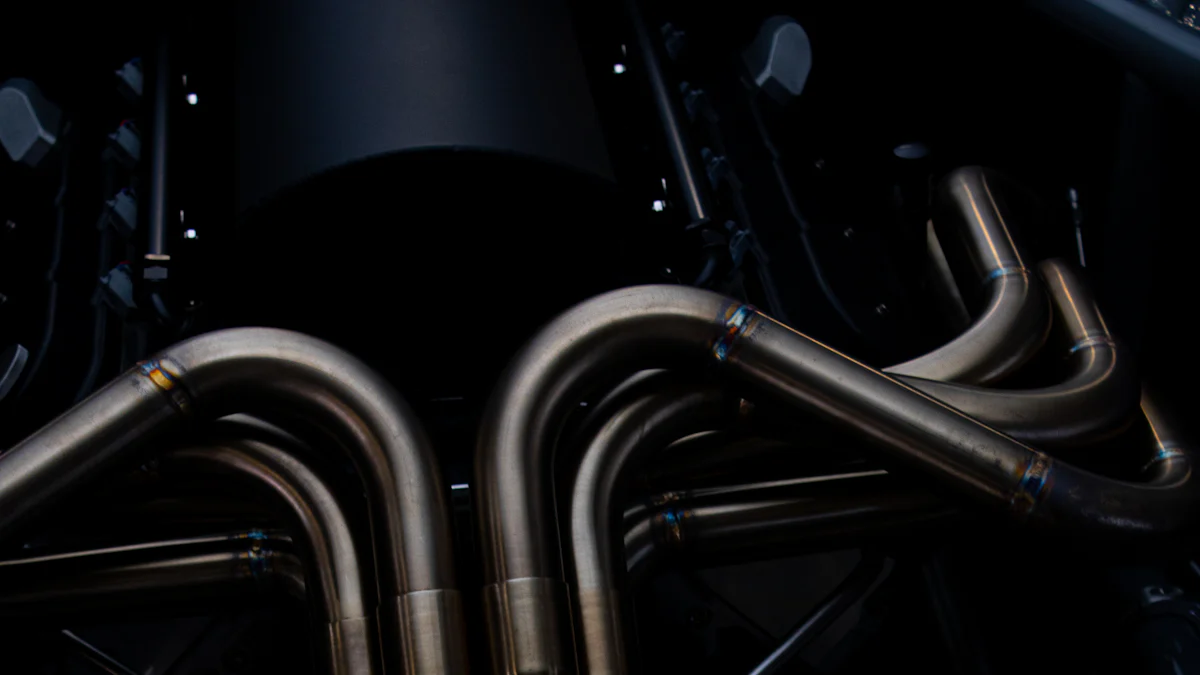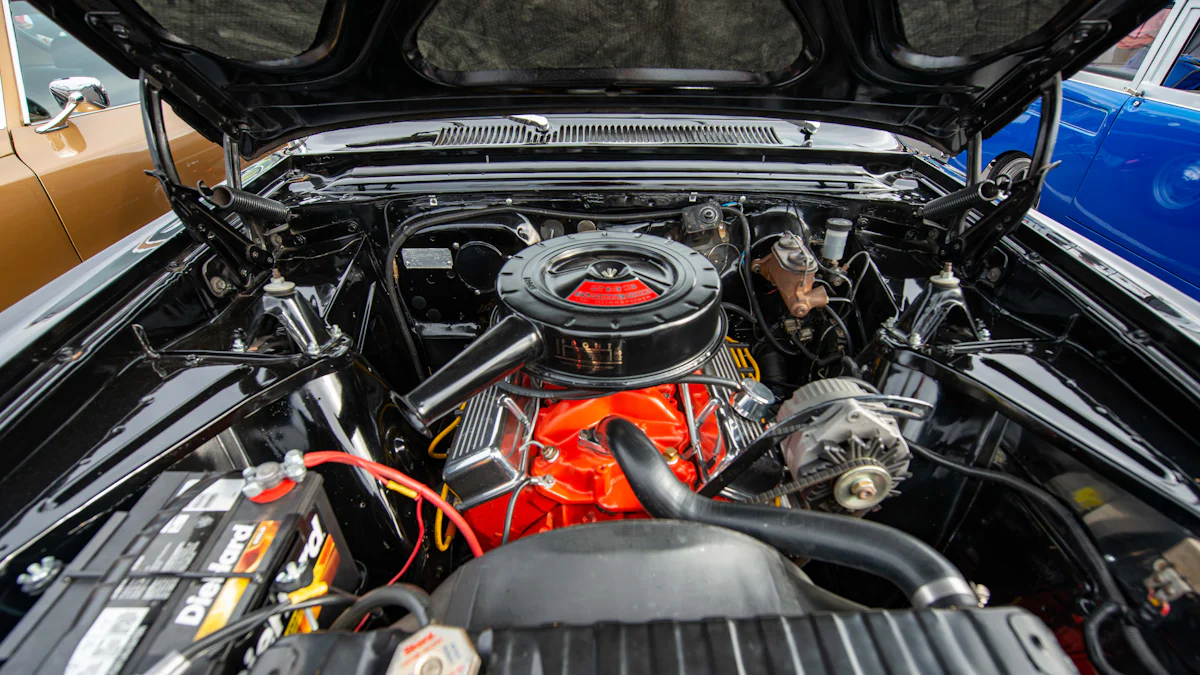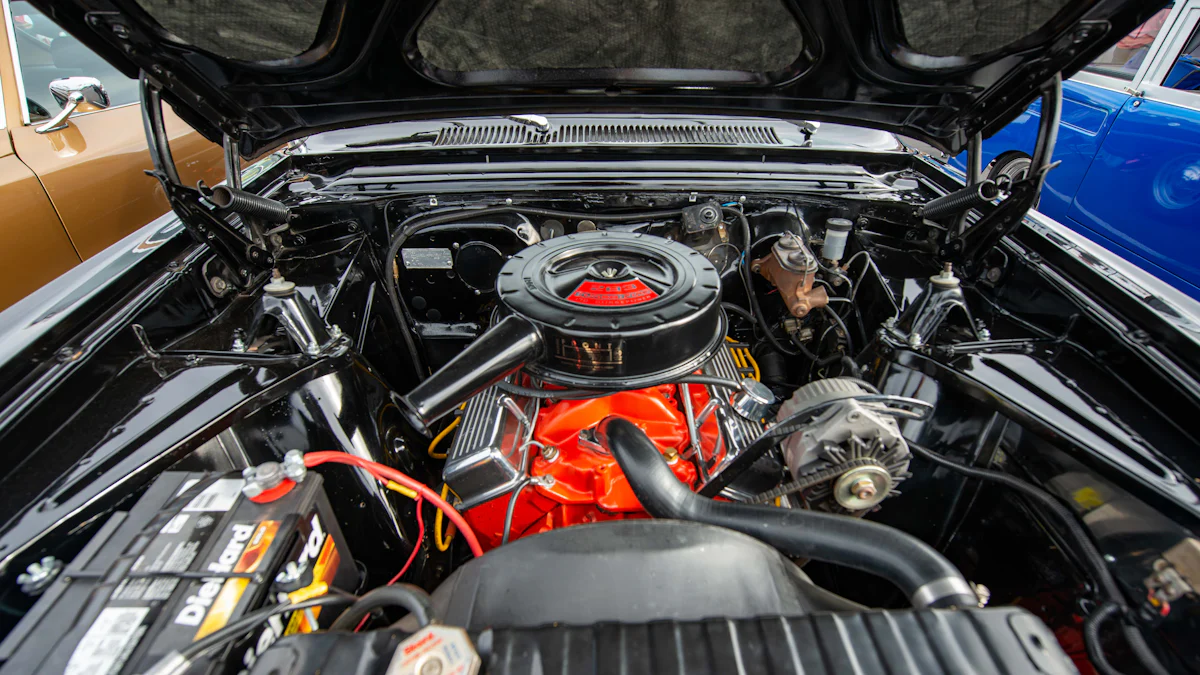
LS exhaust manifolds have garnered immense popularity in the automotive world, known for their robust performance and versatility. The exhaust manifolds, often overlooked yet crucial components, play a pivotal role in optimizing engine efficiency and power output. This guide aims to enlighten readers on the significance of Aftermarket Exhaust Manifolds in enhancing airflow, boosting horsepower, and overall performance of LS engines. By understanding the impact of exhaust manifolds on engine dynamics, enthusiasts can make informed decisions to maximize their vehicle’s potential.
Understanding LS Exhaust Manifolds
What is an Exhaust Manifold?
An Exhaust Manifold serves as a vital component in an engine’s exhaust system. It collects exhaust gases from multiple cylinders and channels them into a single pipe, directing the emissions away from the engine. This process helps to improve engine performance by enhancing airflow efficiency and reducing back pressure.
Definition and Function
The Exhaust Manifold is responsible for gathering the exhaust gases emitted during the combustion process within the engine cylinders. By collecting these gases, it ensures that they are efficiently channeled out of the engine, preventing any obstruction that could hinder performance.
Types of Exhaust Manifolds
- Cast Iron Manifolds: Known for their durability and cost-effectiveness, these manifolds offer a reliable choice for many enthusiasts seeking a balance between strength and affordability.
- Custom Fabricated Manifolds: Tailored to specific engine configurations, these bespoke manifolds provide a personalized solution to meet individual performance goals.
- Hedman LS Swap Exhaust Manifolds: Hedman stands out with its comprehensive range of LS swap exhaust manifolds, catering to diverse vehicle applications with options ranging from cast iron to custom fabricated solutions.
- Hooker LS Swap Exhaust Manifolds: Renowned in the automotive industry, Hooker offers high-quality manifolds designed to optimize engine efficiency and power output, including options in cast iron and stainless steel.
Specifics of LS Exhaust Manifolds
When considering LS Exhaust Manifolds, it’s essential to delve into their specific design features and material choices. These aspects play a crucial role in determining how effectively the manifold can enhance overall engine performance.
Design Features
- Aluminum Flanges: Some LS exhaust manifolds incorporate aluminum flanges that contribute to lightweight construction without compromising on durability.
- Optimized Flow Paths: The design of LS exhaust manifolds often includes optimized flow paths to ensure efficient evacuation of exhaust gases, minimizing back pressure for enhanced performance.
Material Choices
- Durable Construction: Many LS exhaust manifolds are crafted from durable materials such as cast iron or stainless steel, ensuring longevity and resistance to high temperatures.
- Aluminum Components: In some cases, aluminum components are utilized in LS exhaust manifolds for their lightweight properties and corrosion resistance.
Benefits of Upgrading LS Exhaust Manifolds
Upgrading your LS Exhaust Manifold can yield various benefits beyond just improved aesthetics. Understanding these advantages can help you make an informed decision when selecting the right manifold for your vehicle.
Performance Improvements
By upgrading your Exhaust Manifold, you can potentially unlock additional horsepower and torque from your engine. The improved flow characteristics offered by aftermarket manifolds can enhance overall engine performance.
Fuel Efficiency
Efficient evacuation of exhaust gases facilitated by upgraded exhaust manifolds can contribute to better fuel economy. Reduced back pressure allows the engine to operate more smoothly, optimizing fuel consumption.
Sound and Aesthetics
In addition to performance gains, upgrading your LS Exhaust Manifold can also impact the sound profile of your vehicle. Aftermarket manifolds may produce a more aggressive or refined exhaust note, enhancing the overall driving experience.
Choosing the Right LS Exhaust Manifold

Factors to Consider
Engine Compatibility
When selecting an LS exhaust manifold, ensuring compatibility with your specific engine is paramount. Different engines have varying configurations and requirements, so it’s crucial to choose a manifold that fits seamlessly to optimize performance.
Budget Constraints
Budget considerations play a significant role in the selection process of an Aftermarket Exhaust Manifold. Evaluating the cost-effectiveness of different options while balancing quality and performance can help enthusiasts make a well-informed decision.
Intended Use (Street vs. Track)
Determining whether the vehicle will primarily be used for street driving or track performance is essential when choosing an LS exhaust manifold. Street applications may prioritize durability and everyday usability, while track-focused manifolds might emphasize power gains and high-performance features.
Popular Brands and Models
Hooker Headers Overview
Hooker Headers stands out as a reputable brand offering a diverse range of LS exhaust manifolds tailored to various applications. With a focus on quality craftsmanship and performance-oriented designs, Hooker Headers provides enthusiasts with reliable options for enhancing their engine’s capabilities.
Patriot Performance Overview
Patriot Performance specializes in cast gray ductile iron LS swap exhaust manifolds, combining quality craftsmanship with performance-oriented features. These manifolds are designed to enhance the overall driving experience by optimizing airflow efficiency and power output.
Summit Racing Overview
Summit Racing offers enthusiasts access to a wide selection of LS exhaust manifolds, including the Pro LS Turbo manifold for those looking to boost their engine’s performance. With a commitment to quality and innovation, Summit Racing provides solutions that cater to the needs of LS engine enthusiasts.
Customer Reviews and Recommendations
User Experiences
Enthusiasts who have upgraded their LS exhaust manifolds often share positive experiences regarding improved engine performance and sound enhancements. User testimonials highlight the tangible benefits of aftermarket manifolds in enhancing overall driving satisfaction.
Expert Opinions
Experts in the automotive industry frequently recommend upgrading LS exhaust manifolds for enthusiasts seeking enhanced engine dynamics. Their insights underscore the importance of selecting high-quality manifolds from reputable brands to maximize performance gains.
Installation and Maintenance

Installation Process
To begin the installation process of Exhaust Manifolds, enthusiasts should gather the necessary tools to ensure a smooth and efficient setup. The following tools are essential for a successful installation:
Tools Required
- Socket Wrench Set
- Torque Wrench
- Gasket Sealant
- Safety Glasses
- Work Gloves
Once equipped with the required tools, enthusiasts can proceed with a step-by-step guide to installing their Exhaust Manifold effectively.
Step-by-Step Guide
- Begin by disconnecting the battery to ensure safety during the installation process.
- Remove any components obstructing access to the exhaust manifold, such as heat shields or brackets.
- Unbolt the old exhaust manifold carefully, ensuring not to damage surrounding components.
- Clean the mating surface on the engine block thoroughly to prepare for the new manifold installation.
- Apply gasket sealant on both sides of the new manifold gasket before placing it on the engine block.
- Carefully position the new exhaust manifold in place and hand-tighten all bolts before torquing them down securely.
- Reattach any removed components and reconnect the battery once the installation is complete.
Common Installation Issues
During Exhaust Manifold installations, enthusiasts may encounter common issues that could hinder a seamless setup process. Understanding these challenges and having troubleshooting tips at hand can help address potential problems effectively.
Troubleshooting Tips
- If facing difficulty aligning the manifold, double-check that all mounting surfaces are clean and free from debris.
- In case of loose or misaligned bolts, reposition and tighten them evenly to prevent leaks or exhaust system malfunctions.
- When encountering stubborn bolts or nuts, consider using penetrating oil to ease removal without causing damage.
Professional Help vs. DIY
While many enthusiasts opt for a DIY approach when installing Exhaust Manifolds, seeking professional assistance can be beneficial in certain scenarios:
- DIY: Enthusiasts with experience in automotive maintenance may find installing manifolds a rewarding task that allows for customization and hands-on involvement in their vehicle’s upgrades.
- Professional Help: For complex installations or if unsure about specific procedures, consulting a professional mechanic ensures precision and expertise in handling intricate exhaust system components.
Maintenance Tips
Maintaining your Exhaust Manifold is crucial for ensuring optimal performance and longevity of your vehicle’s exhaust system. Implementing regular inspections and proper care practices can help prevent issues and extend the lifespan of your manifold.
Regular Inspections
- Periodically inspect your exhaust manifold for signs of wear, including cracks, leaks, or rust buildup that could indicate potential issues requiring attention.
- Check bolt torque periodically to ensure all fasteners remain secure and maintain proper sealing between components.
Cleaning and Care
- Keep your exhaust manifold clean by removing any accumulated debris or residue that could affect its performance over time.
- Use appropriate cleaning agents suitable for your manifold material to prevent corrosion and maintain its appearance.
Signs of Wear and When to Replace
- Watch out for symptoms such as loud exhaust noises, reduced engine performance, or visible damage on the manifold indicating wear or failure.
- Consider replacing your exhaust manifold if you notice significant deterioration or structural issues affecting its functionality.
Performance Testing and Tuning
Dyno Testing
Importance of Dyno Testing
Dyno Testing plays a crucial role in evaluating the performance of LS exhaust manifolds. It provides precise measurements of horsepower and torque, allowing enthusiasts to assess the impact of manifold upgrades on engine dynamics accurately. By conducting dyno tests before and after installing an aftermarket exhaust manifold, users can quantify the actual gains in power output and fine-tune their vehicle for optimal performance.
How to Interpret Results
Interpreting Dyno Test Results requires a comprehensive understanding of the data provided. Analyzing horsepower and torque curves enables enthusiasts to identify areas where the engine performs exceptionally well or experiences limitations. By comparing pre-installation and post-installation dyno runs, users can visualize the improvements achieved through upgrading their LS Exhaust Manifold.
Tuning for Optimal Performance
ECU Adjustments
Fine-tuning the Engine Control Unit (ECU) is essential when optimizing the performance of an LS engine with a new exhaust manifold. Adjusting fuel maps, ignition timing, and other parameters ensures that the engine operates efficiently with the upgraded manifold. By customizing ECU settings to accommodate the improved airflow characteristics of aftermarket manifolds, enthusiasts can maximize power gains and overall engine responsiveness.
Exhaust Flow Optimization
Optimizing Exhaust Flow is key to enhancing engine performance with upgraded exhaust manifolds. Ensuring smooth evacuation of exhaust gases reduces back pressure, allowing the engine to breathe more freely and operate at peak efficiency. By optimizing exhaust flow through proper header sizing, collector design, and pipe diameter selection, enthusiasts can unlock additional horsepower potential from their LS engines.
Real-World Performance Gains
Case Studies
- Enhanced Flow Dynamics: A case study revealed that upgrading to a high-performance LS exhaust manifold resulted in improved flow dynamics within the engine, translating into significant power gains.
- Maximized Horsepower Output: Another case study demonstrated how meticulous planning for compatibility between an LS swap exhaust manifold and other engine components led to maximum horsepower output without compromising reliability.
- Seamless Installation: In a real-world scenario, seamless installation of an aftermarket LS exhaust manifold contributed to improved engine performance by eliminating restrictions in the exhaust system.
User Testimonials
Enthusiasts who have upgraded their LS Exhaust Manifolds shared positive feedback on the noticeable improvements in both horsepower and torque outputs. Users reported enhanced throttle response, smoother acceleration, and a more exhilarating driving experience after installing aftermarket manifolds. These testimonials underscore the tangible benefits experienced by individuals who prioritize performance tuning through quality manifold upgrades.
In reflection, the guide has shed light on the critical role Exhaust Manifolds play in optimizing engine performance. Choosing the right LS Exhaust Manifold is paramount to unleashing your vehicle’s full potential, from horsepower gains to fuel efficiency enhancements. The stories of lost power due to mismatched manifolds and the seamless installations offered by brands like Hedman emphasize the impact of these components. Upgrade your manifold wisely, not just for performance but also for that distinct exhaust note that sets your vehicle apart. It’s time to take action, upgrade boldly, and share your journey with us.
Post time: Jun-21-2024



